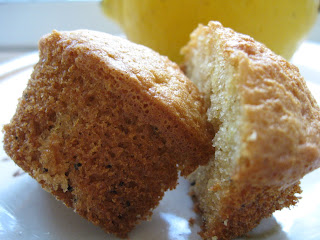
I have been profoundly inspired by this man: Mick Trueman of South Yorkshire, England.
He is not a professional chef. He has not inked any best-selling cookbooks. He's not a food writer or a renowned food critic.
Mick, 51, is a coal miner.
So what the hell am I writing about him for? What does he have to do with food or cooking?
My introduction to Mick "the Miner" was on superstar chef
Jamie Oliver's most recent TV series, "
Jamie Oliver's Ministry of Food", now showing on Canada's
The Food Network.
Oliver, that darling of cooking shows, has long been a crusader for improving nutrition and food awareness in his native England.
English cuisine -- an
oxymoronic term for some -- already suffers from a sullied reputation. Artery-clogging fish and chips, waist-expanding bangers and mash, salty kippers and cholesterol-laden eggs for breakfast, liquor-drenched plum pudding are all tasty inventions for sure, but none of it qualifies as
haute cuisine, never mind healthy. It is by unfortunate extension that the Brits are the butt of fat jokes and especially bad teeth jokes (think "
Big Book of British Smiles" which the dentist on "The
Simpsons" shows to children to terrorize them into taking dental hygiene more seriously).
Jamie Oliver first tried to tackle the national school system, encouraging school cafeterias to prepare healthy, cost-effective meals for children instead of taking the easy (some say lucrative) way out by selling
pre-packaged junk food. Now he is trying to take on one town at a time, pitching his "
Pass it On" idea: if you teach two people how to cook something easy, delicious and healthy, and if each of the two taught two other people, and if those people taught other people, ... eventually a whole community could learn it. Then maybe, just maybe, it would inspire them to start cooking their own meals using fresh local ingredients, instead of resorting to a diet of take-outs, frozen dinners, potato chips, and other deplorable trash.
To test his theory, he recruited a horde of burly, skeptical
blokes from a football (er, "soccer" to us North Americans) game who had never cooked before in their lives. Mick "the Miner" was one of the first two men selected to be taught by Oliver himself: a fast, savory, one-pan recipe for prosciutto-wrapped chicken breasts, seared asparagus spears drizzled with lemon juice, and a crisp side of salad.
Click here to view a video of Mick "the Miner" passing on the recipe to two other men as Jamie Oliver looks on.When asked,
Mick had initially declared that cooking was for "poofs" (that's derogatory English slang for "gays"). His dutiful wife cooked for him every day, which seemed a foregone conclusion for a man who assumed it was "woman's work" anyway. Not once in his life had he picked up a frying pan, let alone cooked a whole meal.
Yet as you can see in the video clip, Jamie Oliver's experiment marked a startling revelation and transformation for Mick. He later says to Oliver that cooking that first meal was probably one of the most significant moments of his life: "It was like Picasso had walked into my life and taught me how to paint". The way Mick beams with utter joy and a rich sense of accomplishment every time you see him cook is incredibly infectious. I catch myself grinning ear-to-ear whenever he's on the screen. His wife is touched and amused, trying to stay out of his way in the kitchen and watching him with adoration. "It's incredibly romantic," she says, and you can't help but agree.
After the experiment, Oliver and camera crew followed Mick to the coal mines to see the kind of searing, filthy, back-breaking work that these tough men endure. Apart from the cultural chauvinism about cooking, it became blatantly obvious why these boys wouldn't want to cook after a long, brutal day in the claustrophobic darkness.
Yet Mick has flourished and grown to absolutely love the culinary arts. Just weeks later, he's at home, cooking a pasta dish with peas, ham and a lemon dressing for his family and Jamie Oliver. Mick is fearless, confident and bubbling with enthusiasm over the flavors he has orchestrated for his audience. Oliver asks for seconds. As the celebrity chef leaves, he lets Mick know that in the past 10 years, he has been invited to a home-cooked meal only 5 times -- this being the 5
th and a great honor.
Watching Mick "the Miner" is like seeing that thing you love through a fresh pair of eyes that is still in the midst of falling in love. Thank you Mick for your wonderful attitude and spirit!
 It is with great regret that I confess total ignorance of M.F.K. Fisher (1908 - 1992) and her body of work up until today. She was not so much a "food writer" as a writer who thought a lot about food through essays and short stories. She published over twenty books and two volumes of journals and letters written in her unique style that led many readers to believe for a while that she was a man.
It is with great regret that I confess total ignorance of M.F.K. Fisher (1908 - 1992) and her body of work up until today. She was not so much a "food writer" as a writer who thought a lot about food through essays and short stories. She published over twenty books and two volumes of journals and letters written in her unique style that led many readers to believe for a while that she was a man.




















